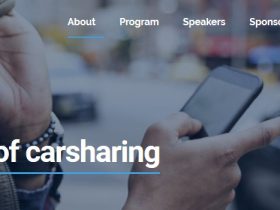By RACHEL ROSENTHAL
Your mother probably told you never to get in a car with a stranger. The multibillion-dollar global ride-hailing industry depends on your ignoring her. If they want to earn that trust, though, companies need to rethink the trade-off they’ve long made between safety and cost.
Around the world, passengers are now hailing more than 10.5-billion rides a year. Not surprisingly, some have ended in tragedy. Uber came under fire in India after a 26-year-old woman was raped by one of its drivers in 2014, and local rival Ola has faced a similar backlash. In the US, Lyft has been sued by multiple women who say drivers sexually assaulted them.
In 2018, within the span of three months, two female passengers were murdered by drivers of China’s ride-sharing company, Didi Chuxing. Didi’s Hitch car-pooling service was once marketed almost as a cross between Uber and Tinder: a taxi service that let drivers and passengers rate each other by appearance. Didi halted Hitch in August 2018 after an outpouring of anger from state media, regulators and China’s version of the #DeleteUber movement.
Last week, Didi announced plans to restart Hitch on a trial basis in seven Chinese cities by the end of November. The decision follows a “comprehensive safety review and product revamp”, as well as the introduction of a new women’s safety programme that includes better “risk analysis” and an updated in-app security assistant. Didi plans to spend 2-billion yuan (R4.2bn) on safety measures in 2019, including more frequent use of facial-recognition technology — to ensure drivers are who they say they are — and a deeper review of abnormal driving patterns, as well as more regular safety tests for drivers.
Your mother probably told you never to get in a car with a stranger. The multibillion-dollar global ride-hailing industry depends on your ignoring her. If they want to earn that trust, though, companies need to rethink the trade-off they’ve long made between safety and cost.
Around the world, passengers are now hailing more than 10.5-billion rides a year. Not surprisingly, some have ended in tragedy. Uber came under fire in India after a 26-year-old woman was raped by one of its drivers in 2014, and local rival Ola has faced a similar backlash. In the US, Lyft has been sued by multiple women who say drivers sexually assaulted them.
In 2018, within the span of three months, two female passengers were murdered by drivers of China’s ride-sharing company, Didi Chuxing. Didi’s Hitch car-pooling service was once marketed almost as a cross between Uber and Tinder: a taxi service that let drivers and passengers rate each other by appearance. Didi halted Hitch in August 2018 after an outpouring of anger from state media, regulators and China’s version of the #DeleteUber movement.
Last week, Didi announced plans to restart Hitch on a trial basis in seven Chinese cities by the end of November. The decision follows a “comprehensive safety review and product revamp”, as well as the introduction of a new women’s safety programme that includes better “risk analysis” and an updated in-app security assistant. Didi plans to spend 2-billion yuan (R4.2bn) on safety measures in 2019, including more frequent use of facial-recognition technology — to ensure drivers are who they say they are — and a deeper review of abnormal driving patterns, as well as more regular safety tests for drivers.
But the key to the Hitch relaunch are new restrictions on the programme. The service will be limited to trips under 50km and women can only ride between 5am and 8pm. By contrast, men can keep riding until 11pm.
While the company’s intentions are good, this is no solution. A sophisticated analysis of high-risk scenarios won’t help you if you’re stuck in the back seat within an inch of your life. And to assume that a woman will only be raped and murdered between 8pm and 5am more than 50km from her pick-up point seems a bit naïve.
What the ride-hailing industry in China and elsewhere really needs to do is re-examine who’s allowed to drive in the first place. It’s hard to say whether the measures Didi is now implementing would have screened out Zhong Yuan, the 28-year-old Hitch driver who was executed in August for murdering his 20-year-old passenger. After passing background checks and providing documentation, you can still become a Didi driver in 10 days or less.
Instead, companies should be raising the barriers to entry so they’re hiring fewer, better drivers. And if they won’t, governments should step in. In Malaysia, regulators now require aspiring drivers to pass written exams and health checks, and to register for specific permits. About a third of applicants have failed the exam thus far, transport minister Anthony Loke said in October, and more than 20% of Grab drivers have reportedly quit to avoid complying with the stricter regulations.
Singapore imposed new rules earlier in 2019 to bring ride-hailing companies closer in line with taxi operators. The regulations were proposed less than a week after my Bloomberg News colleague Yoolim Lee wrote about a Grab accident that left her with a broken neck and at risk of stroke. She estimated that, around the time of the incident, nearly half of private-hire drivers in the city didn’t have the proper licence and shouldn’t have been driving. While fewer drivers doesn’t necessarily mean safer drivers, a steeper commitment at least means they have a lot more at stake to protect their livelihoods.
The genius of the gig economy is the ability to make money from underutilised, ubiquitous skills. Yet the model may have been taken too far. Just because you can make an omelette doesn’t mean you should run a diner. So why should you drive professionally just because you have a licence?
Shrinking the supply of drivers will obviously make rides more expensive. But it’s worth judging the prospect of higher prices against the long cycle of the internet economy. The internet has made everything from academic research to air travel cheaper and easier to access. At the same time, quality goods and services can’t be free forever: we’ve seen this in the news business, where websites that once offered unfettered access to their journalism (including Bloomberg) have implemented paywalls. If fewer drivers means safer rides, that’s a price most people should be willing to pay.
While the company’s intentions are good, this is no solution. A sophisticated analysis of high-risk scenarios won’t help you if you’re stuck in the back seat within an inch of your life. And to assume that a woman will only be raped and murdered between 8pm and 5am more than 50km from her pick-up point seems a bit naïve.
What the ride-hailing industry in China and elsewhere really needs to do is re-examine who’s allowed to drive in the first place. It’s hard to say whether the measures Didi is now implementing would have screened out Zhong Yuan, the 28-year-old Hitch driver who was executed in August for murdering his 20-year-old passenger. After passing background checks and providing documentation, you can still become a Didi driver in 10 days or less.
Instead, companies should be raising the barriers to entry so they’re hiring fewer, better drivers. And if they won’t, governments should step in. In Malaysia, regulators now require aspiring drivers to pass written exams and health checks, and to register for specific permits. About a third of applicants have failed the exam thus far, transport minister Anthony Loke said in October, and more than 20% of Grab drivers have reportedly quit to avoid complying with the stricter regulations.
Singapore imposed new rules earlier in 2019 to bring ride-hailing companies closer in line with taxi operators. The regulations were proposed less than a week after my Bloomberg News colleague Yoolim Lee wrote about a Grab accident that left her with a broken neck and at risk of stroke. She estimated that, around the time of the incident, nearly half of private-hire drivers in the city didn’t have the proper licence and shouldn’t have been driving. While fewer drivers doesn’t necessarily mean safer drivers, a steeper commitment at least means they have a lot more at stake to protect their livelihoods.
The genius of the gig economy is the ability to make money from underutilised, ubiquitous skills. Yet the model may have been taken too far. Just because you can make an omelette doesn’t mean you should run a diner. So why should you drive professionally just because you have a licence?
Shrinking the supply of drivers will obviously make rides more expensive. But it’s worth judging the prospect of higher prices against the long cycle of the internet economy. The internet has made everything from academic research to air travel cheaper and easier to access. At the same time, quality goods and services can’t be free forever: we’ve seen this in the news business, where websites that once offered unfettered access to their journalism (including Bloomberg) have implemented paywalls. If fewer drivers means safer rides, that’s a price most people should be willing to pay.
















